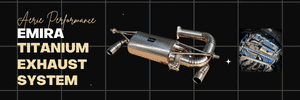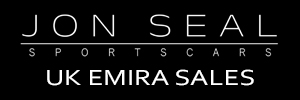scc.131.fe
Emira Fiend
I get the quickjack best-practice of putting the label-end under the heaviest part, but the placement of the "block trays" seemed more optimal in this direction during my first impressions. But, I will test it the other way next.
My level of comfort with the orientation shown comes down to three things
- I'm using a jack system rated for more than 2x the Emira weight
- I'm not lifting it to remove/shift any major weight
- I could lift it in very small intervals to briefly rock the car and test for balance
I used the shortest lifting block possible to see if the small QJ blocks provide enough height to avoid car-to-jack contact. They do, there is no contact apart from rubber, but I'll need better pictures to show the air gap at each location. Next round I'll use the taller blocks since I'm pretty confident they will also fit under the car while placing the jacks. Taller blocks will permit more line of sight and access to outboard panel fasteners. I've only taken off the diffuser so far, so I can't speak to removing any aluminum panels with the QJ in place. Will do that during 1st oil change in 600 more miles.
*Just my opinion*
On principles of load distribution and bending moments, I like that the longer QJ allows me to hit the rear factory lift point while the front block hits the rail closer to the forward jack point, and forward of the taper joint (where the chassis starts to narrow). It just means that less of the front is overhanging the front block, and therefore less bending moment on that part of the chassis.
I would have moved the quickjack further inboard, which would have let the front block move a bit further forward on the metal rail, but the rear lift point is very close to an aero strake which the QJ would hit on the short block. I'll try to see if the taller block would allow me to get inboard more without risk of hitting that piece.

My level of comfort with the orientation shown comes down to three things
- I'm using a jack system rated for more than 2x the Emira weight
- I'm not lifting it to remove/shift any major weight
- I could lift it in very small intervals to briefly rock the car and test for balance
I used the shortest lifting block possible to see if the small QJ blocks provide enough height to avoid car-to-jack contact. They do, there is no contact apart from rubber, but I'll need better pictures to show the air gap at each location. Next round I'll use the taller blocks since I'm pretty confident they will also fit under the car while placing the jacks. Taller blocks will permit more line of sight and access to outboard panel fasteners. I've only taken off the diffuser so far, so I can't speak to removing any aluminum panels with the QJ in place. Will do that during 1st oil change in 600 more miles.
*Just my opinion*
On principles of load distribution and bending moments, I like that the longer QJ allows me to hit the rear factory lift point while the front block hits the rail closer to the forward jack point, and forward of the taper joint (where the chassis starts to narrow). It just means that less of the front is overhanging the front block, and therefore less bending moment on that part of the chassis.
I would have moved the quickjack further inboard, which would have let the front block move a bit further forward on the metal rail, but the rear lift point is very close to an aero strake which the QJ would hit on the short block. I'll try to see if the taller block would allow me to get inboard more without risk of hitting that piece.








